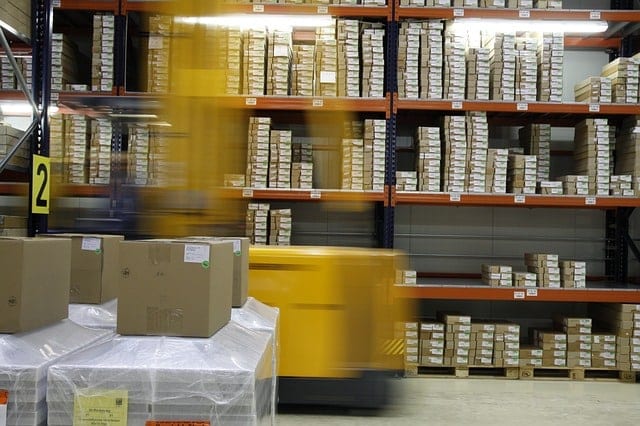Ask Capacity: How Do I Manage Short-Term Seasonality Without Long Term Storage Contracts?
We often get asked about the best ways to manage short-term seasonality, when the reality of order fulfillment means planning cargo movements and efficient inventory management throughout the year.
Keeping product in storage costs money, as do long term storage contracts. No-one wants to keep more stock on hand than is required in the immediate future, but the implications of running out of an item in high demand can be just as damaging in terms of lost sales.
This is a structural challenge in the US economy, and those of us preoccupied with executing order fulfillment services spend much of our year thinking about and planning for it. Managing short-term seasonality with your long-term storage contracts can pose some tough operational questions, but we'll try to answer some of those for you today.

Understanding Seasonality

The seasonal surge, known by most as "peak season," is typically a three to four-month spike in inbound shipments, at first, followed by outbound shipments and with some overlap between the two.
In terms of filling orders, shipments to retailers come first, followed by a huge spike in shipments directly to consumers. Industries like toys can see as much as 80% or more of their sales in a very short time frame.
This is primarily an issue for consumer products, because other verticals do not have such spikes in volume in the odd phenomenon which is our holiday peak season.
Demand for baby products and medical devices tends to be relatively flat throughout the year. Demand for gift items, of course, spikes suddenly and strongly as we approach the holiday season.
As this time of year rolls around, maintaining SLAs (service level agreements) – the ‘guaranteed’ turnaround time for an order to go out - becomes more important than ever.
Managing Seasonality and Storage Contracts
There are a number of techniques to maintain SLAs. Also paramount is keeping your storage and warehouse expenses in check, making these shifts in seasonal demand easier to stomach because they don't rack up exorbitant costs.
Some of the factors you must keep in mind include:
1. Manage your labor carefully
From Labor Day to Christmas Eve ask employees to avoid vacation time, excepting areas like sales and finance. Make additional use of temporary labor, but rely more on additional shifts of previously trained workers. Feather in additional day shifts and night shifts as needed.
So that you're well prepared, start this process well before peak season hits. Shake out any issues with training or attendance before crunch time. Cross train supervisors and other employees on different tasks, facilities and shifts. Add flexibility and scalability wherever possible, but always at the lowest possible cost.
2. Take care of your people
When smaller, rely on a core team. If needed, use overtime to help address the challenges of volumes, but spikes which routinely are 5-10 times the norm require additional hands on deck. Hourly workers are incented by the prospect of overtime pay, but the cost curve goes up more steeply than the productivity curve. The latter goes down as steeply if not more so. Good service is highly correlated to happy, well-rested workers, and vice versa. Provide a career path for all workers, whatever level they start at, and offer benefits and pay for performance along that path.
3. Set expectations carefully
Plan with your clients who have significant historical volume spikes, and be realistic about your ability to maintain SLA during peak. That may mean running an extra day shift right after Black Friday, working the weekend, whatever it takes. Work Sunday afternoon shifts to address the weekly spike and accumulated volume of the extra online shopping days over the weekend. Get ready to attack the larger seasonal volume spikes, and even the smaller ones: it’s like training for the really big ones.
4. Watch out for carrier issues
Ultimately all supply chain systems are rooted in the real world, making them fully subject to physical constraints. The idea that the parcel carriers can infinitely multiply their human and hard assets for 22 days of the year is not realistic; there will always be a cap to the extra drivers, equipment and sorting capabilities they can access.
This is experienced most acutely in the delays we observe from ground services during those absolute peak days. And the carriers can also get hurt if they over-staff and prepare for more volume than they get, as they learned in 2014 when they tooled up in response to shortfalls in 2013. All the carriers are more incented to NOT over-staff and over-equip for the volumes, which will inevitably negatively impact profits.
5. Technology improves throughput
There is no denying that the move towards ever more sophisticated IT solutions can increase productivity dramatically. But that is impossible without disciplined, expert implementation. Many software implementations fail. Hardware is fickle. Be prepared and expert at troubleshooting, duct tape, spit and vinegar.
Balancing seasonal demands with long term storage contracts presents the opportunity to manage a highly complex challenge.
To manage short-term seasonality, it takes the expert deployment of people, places, and the many tools of our trade. You will have to lead your people through challenging and demanding times. It is not for everyone, but for those who are up for and excited by the challenge, there is nothing better.
